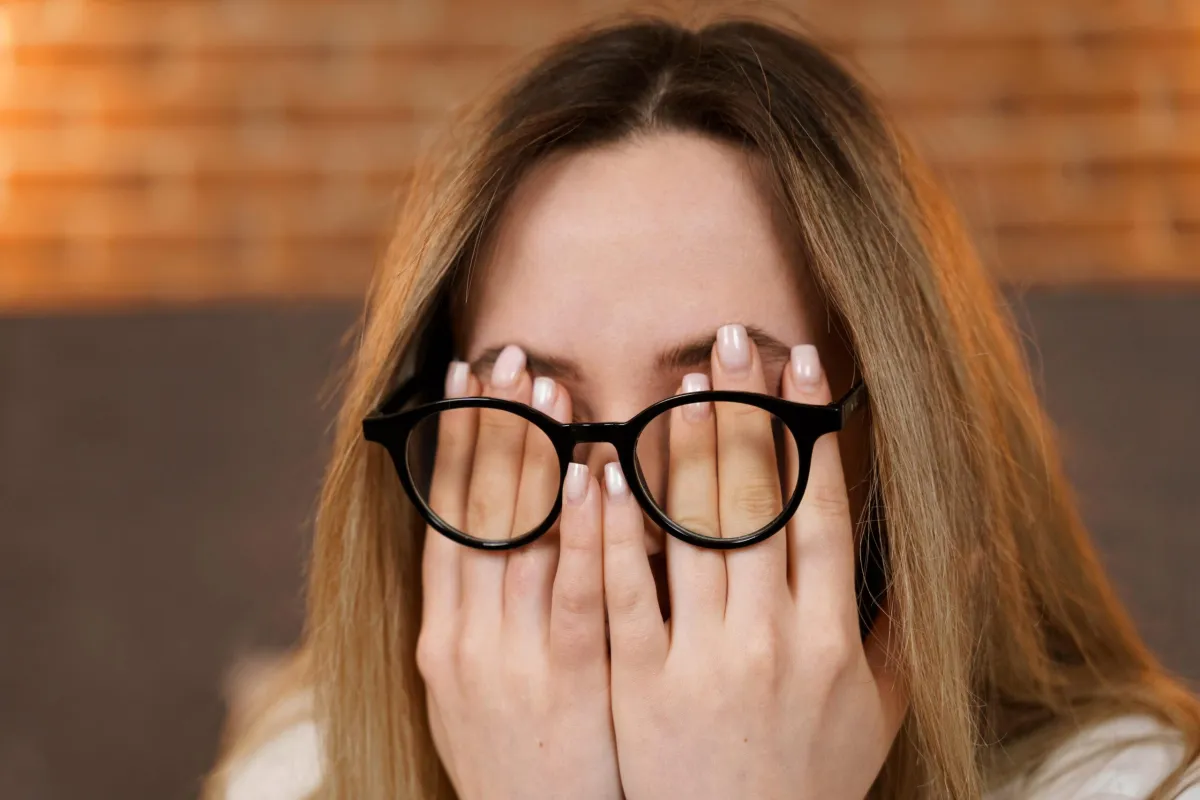
Say Goodbye to Eye Strain with 5 Practical Tips
Have you ever been reading, looking at a screen, or even driving, and found that your eye starts to water, sting, and have trouble focusing? In most cases, this is down to eyestrain. This usually happens because the lens of the eye, which we use to focus, becomes fatigued, and it can be a serious pain, especially if you work at a computer all day, like I do.
So in this post, we’re going to look at some easy and practical ways to avoid eyestrain so we can get through our days in comfort knowing that we’re doing our best to preserve our vision for years to come.
Take Breaks
In today’s digital age, it’s more important than ever to take regular screen breaks to prevent eye strain. Constantly staring at screens can lead to discomfort, dry eyes, and even headaches. To combat these issues, you will want to make sure your screen is a comfortable distance away and take frequent breaks.
Follow the 20-20-20 rule: every 20 minutes, take a 20-second break and look at something 20 feet away. This simple practice can help reduce eye strain and keep your eyes feeling fresh and rejuvenated throughout the day.
(There are screen-dimming tools that can help to reduce the glare of a screen, but it’s not blue light from the screen that causes eyestrain, so blue light glasses and covers will not do as much.)
Light Area Well
The lenses of your eyes work overtime in areas that are not well-lit. This not only includes trying to focus in dark areas but also working with an intense light source, with no contrasting or complementing light around it.
So make sure your workspace is well-lit with a combination of natural and artificial light as this reduces glare and harsh contrasts. You will also want to position your light source so that it illuminates your work without causing reflections on your screen or creating shadows as they can strain your eyes.
If you find your eyes feel strained when driving at night, then you might want to avoid night driving or make sure that your eyes are rested before you hit the road.
Keep Eyes Lubricated
Eyestrain can happen due to a lack of blinking or natural lubrication just as much as overworking the eye’s lenses. So to prevent discomfort and dryness, especially during long periods of screen time, consider using lubricating eye drops to keep your eyes moist and refreshed.
Also, blink regularly, as this helps spread tears evenly across the surface of the eyes, providing natural lubrication. You still need to take breaks, but eyedrops are a good preventative tool.
Consider Corrective Lenses
If you find that you are experiencing eyestrain more often than usual, then it could be a sign that your eyes are having to work more to see effectively. An eye examination by a qualified optometrist or ophthalmologist can determine if you have underlying vision issues that contribute to eye strain.
Whether it’s nearsightedness, farsightedness, or astigmatism, wearing the appropriate corrective lenses can significantly reduce the strain on your eyes and improve overall visual comfort.
Get Enough Sleep
Although it’s not directly linked to eye strain, sleep deprivation can affect your eye health. Lack of sleep can lead to eye fatigue and dryness, making it more challenging to focus on digital screens. Aim for 7-9 hours of quality sleep each night to allow your eyes to rest and rejuvenate.
Last Thoughts
Eyestrain does not cause permanent damage but it’s important to safeguard your long-term eye health and overall well-being. It could also be an indicator that something’s wrong, so if eye strain is a frequent occurrence and you’re taking proactive measures to prevent it, it’s worth a visit to get it checked out.
© 2023 Freedomkit | Powered by Freedomkit.ai

